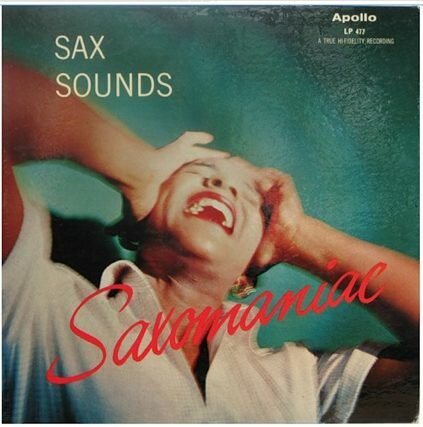Thanks to everyone for the headache treatment advice, and to D.Sidhe for the tutelage in triptans, I seem to be on a 2-clusters per 24 hour cycle — the last pair arrived at 11:30 a.m. yesterday, and 3:30 this morning. And as Chris Vosburg surmised, I’m in something of a manic phase at present, although sadly it’s not the mania following the end of a cluster siege, but just a generalized desperation to get some work done while I can. And to what better use could I put my brief periods of lucidity than by psychoanalyzing old album covers? Hm? I ask you.
The first image is a fairly straightforward representation of my week so far:

But I warn you: some of these album designs date to that most terrifying and subversive of decades, the 1960s, and may therefore trigger a Freak-Out.
Proceed at your own risk (might get slightly NSFW)…

When his groundbreaking approach to Pop Art was rejected by the major U.S. record labels, a young Peter Max took his revolutionary aesthetic to Mexico, where he paired up with the experimental mariachi quartet Los Mike Nelsons (their debut album, mis pulmones son dolor de aire, was recorded entirely underwater, with the band singing through snorkels, and whale song replacing the then popular Hammond electric organ sound). Through seven album covers in six years, Max struggled with the now familiar visual tropes he would later perfect in the late Sixties and early Seventies.

Pssst! I’m in the Klan…!

Trannies of the Pampas was a huge hit throughout Latin America in 1959, but it’s better known in the U.S. as the Theme from the Magnificent Seven.

Yes, what with the Tea Baggers, the Birthers, the Deathers, and all the other easily roused rabble, it seems like America is experiencing a new birth of Stupidity. On the other hand, back in 1963, people could be swindled by puppets.

Not The Beatles, But an Nauseating Simulation! (“Yeah, I guess I like The Fab Four okay, they’re just a little too good-looking for me…Hey, wait a second…! Who’re the new guys?”)

“We’re called…The Aristocrats!”

“This is the part on Sprockets when we dance!”

Fascinated by the possibility of unlocking the unconscious mind, Xaviar Cugat’s music struggled to show the Hootchie-Coochie and the Cha-cha-cha! from a strict Freudian perspective.

After the studio system collapsed in the late Fifties, and roles dried up, tough guy stars Randolph Scott and Richard Widmark formed a duet and began touring the Southwestern states in drag. No one knows why.

Before Xuxa, Brazil’s most popular childrens television host was the irrepressible Molestador the Clown.

I don’t care for Martin’s cover of Love at Sight, because it’s vague (Love at First sight? Third? The fifteenth time you bumped into each other reaching for the Baconnaise dressing at The Sizzler salad bar, and suddenly you were seized with passion?), but I can’t argue with his album designer’s headache pain management regimen.
Well, Tammy looks like a fresh-faced country girl with Jiffy-Pop for hair, but Jim is obviously the sleaze-bag we all found him out to be years later. And the big tan dog puppet knows it too.
Left by Capmconnundrum on September 15th, 2009